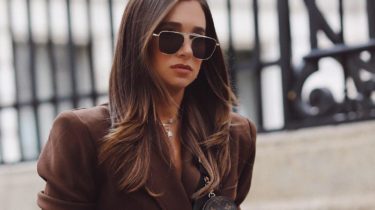In Influencer fashion and excellence brands will include more in 2020

Influencer showcasing isn’t going anyplace; it’s simply evolving.
In 2019, influencers — and the brands that work with them — saw some enormous moves around influencer promoting. A pivotal turning point came in November when Instagram declared it would begin a test by concealing preferences in the U.S. The news started worries from influencers and prompted stories on the prospective demise of the influencer network. Others considered it to be a chance to take a gander at new measurements, degrading the “like” and rather concentrating more on a differing scope of measurements like commitment rate, changes and site traffic. Moving into 2020, it appears that expanding the influencer technique will be key for brands.
Pierre-Loïc Assayag, fellow benefactor and CEO of influencer relationship the board stage Traackr, said organizations that have just observed some accomplishment with influencers will keep on putting resources into this divert in 2020.
“In some industries, like in cosmetics, in fashion and in CPG, as well, [influencer marketing] is starting to compete with media plans,” said Assayag. “Media planners, media planning firms and agencies have been dismissing influencer marketing for a long time, and now it’s starting to eat up some of their budget. Now they are paying attention. In 2020 and 2021, there’s probably going to be an all-out war between media planners and influencer marketing.”
Rotate opened up to the world in June. At the time, the organization’s main image official Raissa Gerona said they spent numerous weeks heading out to meet with financial specialists clarifying the estimation of influencer showcasing. At a certain point, the organization shared that, in 2018, influencers drove 70% of offers for the organization, which was esteemed at $1.2 billion.
“The educational process is crucial for them to understand not only how Revolve does [influencer marketing], but also that this is how young people get information and get inspiration,” Gerona said in a past meeting with Glossy.
The organization announced advertising expenses of $23.1 million for the second from last quarter, up from $18.9 million in a similar three-month time frame in 2018. That figure represents a wide assortment of promoting channels, as paid social and customary execution advertising, per the organization’s latest profit call, yet influencer showcasing is as yet a significant concentration for the web based dress retailer.
“We are pioneers of social media marketing and will continue to stay at the forefront by focusing on building upon our experiential marketing initiatives — such as Revolve Festival, Revolve Summer, Revolve Around The World — and collaborating with influencers within our network,” Gerona said. “Instagram will continue to be a key platform for communicating with our customer, and it’s constantly evolving. We’re also exploring video content heavily with platforms such as YouTube and TikTok.”
While Revolve has asserted some authority as an innovator in the influencer promoting space, different organizations are as yet attempting to consummate their influencer systems. Furthermore, the chance, for the individuals who can do it well, is just developing. In 2019, the influencer showcasing economy was relied upon to hit $6.5 billion, as per Influencer Marketing Hub, with 86% of brands saying they intended to put more in influencers consistently.
For brands proceeding to concentrate on influencers, examiners said acquiring an assortment of individuals with different adherent tallies will be critical.
“Successful brands will continue to use a tiered approach to influencers, from both a paid and earned perspective, to build long-term relationships with authentic, third-party endorsements,” said Lindsay Johnson, bunch account chief for influencer and internet based life showcasing at Small Girls PR.
By and large, design and magnificence brands worked progressively small scale , nano-and full scale influencers into their systems in 2019. Sephora reported its Sephora Squad program in April, which picked 24 brand represetatives with fluctuating devotee tallies to work with the brand. Organizations like Aerie, Nasty Gal and Shopbop have every single fashioned association with different influencers, too. Over the late spring, Amazon even got into working with influencers for The Drop, which dispatches restricted version assortments planned by influencers for Amazon Fashion clients.
What those brands share for all intents and purpose is that they’re hoping to manufacture all the more long haul associations with persuasive individuals, as opposed to pay them to post a couple of things on Instagram.
“One-off influencer marketing posts do not make impact or resonate with consumers. It is essential for brands to actually invest in this form of marketing versus just dabble in it,” said Sherry Jhawar, co-founder and president of Blended Strategy Group. “I often remind chief marketing officers and other marketing executives that when print media plans were a larger part of marketing budgets, we would never have done just one print ad in one magazine and say that was our print plan for the year or for a product launch. So why would we do that with influencer marketing?”
Johnson said this act of putting more in influencer advertising, yet working with influencers with an assortment of supporter tallies, is just going to proceed into 2020.
“Depending on a brand’s goals, working with mega-influencers and celebrities will still be worth the spend from an individual reach perspective, as well as a media perspective. The talkability of a campaign is stretched further if you can leverage a celebrity for interviews, which is unlikely to be the case for even large-scale influencers,” Johnson said.
Packers Herley writes books, which, considering where peoples are reading this makes perfect sense. He’s best known for writing articles on science and technology. Now he works an author in Digest Express .
Disclaimer: The views, suggestions, and opinions expressed here are the sole responsibility of the experts. No journalist was involved in the writing and production of this article.
